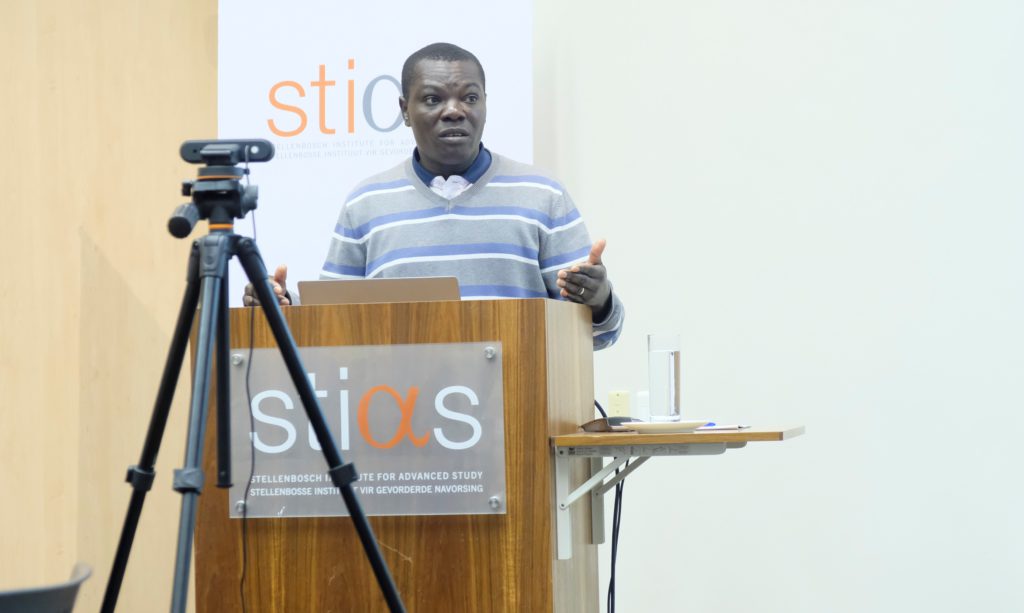“We are all very familiar with weighing our vegetables on electronic weighing scales in supermarkets – these convert the force of a weight mass to an electric signal using sensors on the surface. But what about tiny masses – nanoparticles, objects less than 1 µm – how do we weigh these? Conventional scales won’t be able to, they are not sensitive enough,” said Philippe Djorwé of the Department of Physics at the University of Ngaoundéré, Cameroon.

“How do we accurately measure the mass of things like bacteria, viruses, proteins and micro-RNA?”
“Fortunately, owing to the progress made in nanofabrication, it is possible nowadays to design nanomechanical resonators that are sensitive to chemical, physical and biological entities. Mass-sensors are widely used in the detection of particles ranging from viruses, environmental pollutants and for water treatment. However, the sensitivity of conventional sensors is limited by their weak output spectrum mechanical frequency resolution.”
Sensors are devices that convert chemical, physical and biological responses into electronic signals. Sensor technology has many practical uses across science and technology ranging from detecting diseases at the level of nanoparticles, tracing environmental pollution and measuring water salinity, to acoustics, mobile phones and biosensors. But to optimise all of this we need to enhance the sensitivity of sensors.
And improving their sensitivity is something Djorwé hopes to contribute to.
Exceptional sensitivity
Iso Lomso fellow Djorwé’s work is in the field of opto-electromechanics which has developed over the past 20 years and brings together optics, electronics and mechanics. Electromechanics involves the act or control of mechanical motion by electrical signals, while optomechanics is the activation or control of mechanical motion by an optical field – usually a laser.
Along with colleagues at the University of Lille in France, Djorwé has found that an approach based on ‘exceptional points’ may lead to more sensitive sensors compared to conventional approaches. Most complex systems operate on the basis of gains and loss. Exceptional points (EPs) are singularities in systems with balanced gain and loss.
They have shown that it’s possible to engineer opto-electromechanical sensors based on EPs and have focused on optomechanical systems operating both at EPs and at higher-order EPs to further increase sensitivity.
“The work has shown that EP-based sensors are superior to conventional sensors – in terms of resonance and the production of more resolved peaks,” said Djorwé. “EP makes detection easier and more sensitive – even when the size of the particle is very small.”
Too much noise
So, EP-based sensors enhance sensitivity with precision that is similar to conventional sensors. That’s the good news. But it’s not the end of the story. The heightened sensitivity might actually bring new challenges.
“The resolution with exceptional points is higher – because of the heightened visibility of the resonance peaks and research is showing that this signal amplification may induce noise due to the presence of gain in the system. Noisy environments are not suited for EP sensing,” explained Djorwé.
Noise, in this case, is not just traffic or loud rock music, but refers to things at the quantum level like thermal fluctuation, air pollutants and shot noise – random fluctuations due to the discrete nature of photons or electrons. “So EP-based sensors are more sensitive, but their precision is blurred by quantum noise,” continued Djorwé.
These findings have been confirmed by other researchers including those at Stellenbosch University where Djorwé presented his work in 2022. This has led Djorwé and his colleagues to look at new approaches based on engineering EP in a passive system using synthetic magnetism – a new method in which researchers engineer artificial magnetic fields for photons and phonons to make them akin to electrons in a magnetic field. They are also looking at the possibility of using ‘squeezed light’ which is used to reduce the photon counting or shot noise with the hope that this will reduce noise while not impacting on the output spectrum of EP sensors – thus avoiding the noise amplification without losing the enhanced sensitivity.
Their future work will also include investigating quantum entanglement for multi-sensing scheme and looking at artificial intelligence for EP-sensor smart detection. EPs also exhibit other interesting properties and quantum concepts such as heat transport, multipartite quantum entanglement, photon/phonon non-reciprocal/topological transport, and quantum synchronisation based on EPs are interesting angles that could be investigated further.
Djorwé is particularly keen to build research capacity in this area at his home institution in Cameroon. His interest in this field was particularly heightened during the COVID-19 pandemic when the need to accurately detect and identify viruses became even more important.
“I thought we could make a contribution on mass sensors – increasing their sensitivity, accuracy and precision – that would be helpful to the people of Africa. I’m particularly interested in looking at how the work can help in my environment.”
Michelle Galloway: Part-time media officer at STIAS
Photograph: Noloyiso Mtembu
